Most countries were involved in redundant two-way seafood trade, but most trade occurred between five partners, and nearly 50 percent involved only 4 species
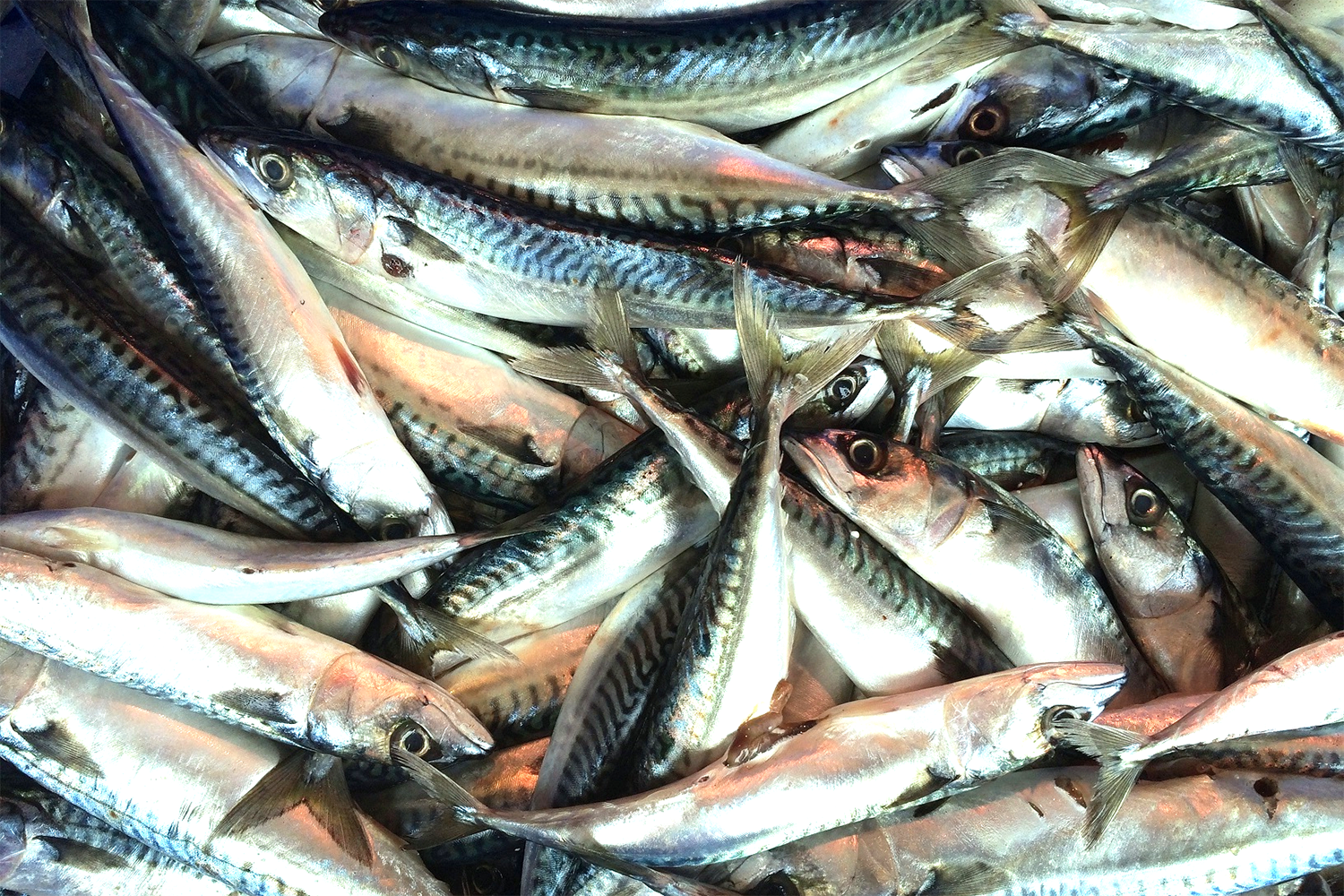
International trade has dramatically transformed the global economy over the past two centuries. Improving the sustainability of trade is of paramount importance for assessing progress towards and achieving sustainable development goals at national and international scales. Sustainable trade creates economic value, reduces poverty and inequality, and preserves and reuses environmental resources.
Seafood plays an important role in sustainably feeding the world and is one of the most highly traded foods. Improving seafood sustainability has focused largely on production (e.g., aquaculture, fishing). Less research, however, has focused on improving the sustainability of the seafood trade, a critical part of the supply chain. In some cases, seafood trade is likely to have negative environmental and social impacts, ranging from excessive greenhouse gas emissions and the spread of invasive species associated with transportation. Seafood trade allows for the displacement of environmental impacts far from the place of consumption and makes environmental and social impacts more difficult to trace and manage.
One way to streamline seafood trade is to eliminate the exchange of the same quantity and type (e.g., species and/or product) of seafood between two countries (redundant two-way trade). Although there are numerous socioeconomic and ecological factors that may explain redundant trade (e.g., seasonality, management restrictions, financial incentives), the reduction of redundant two-way trade could have social and environmental benefits. Data deficiencies in global seafood trade data currently prohibit further exploration beyond the annual and taxonomic species level (i.e., compared to seasonal and product differentiation), which introduces uncertainties in our results.
This article – summarized from the original publication (Kuempel C.D. et al. 2024. Quantifying global redundant fisheries trade to streamline seafood supply chains. PLoS ONE 19(7): e0305779 – presents the results of a study that determined the volume, extent, trade partners, and taxonomic species involved in redundant trade practices given the best available data, which is the first step in understanding what, if any, sustainability gains could be made through the reduction of redundant trade.
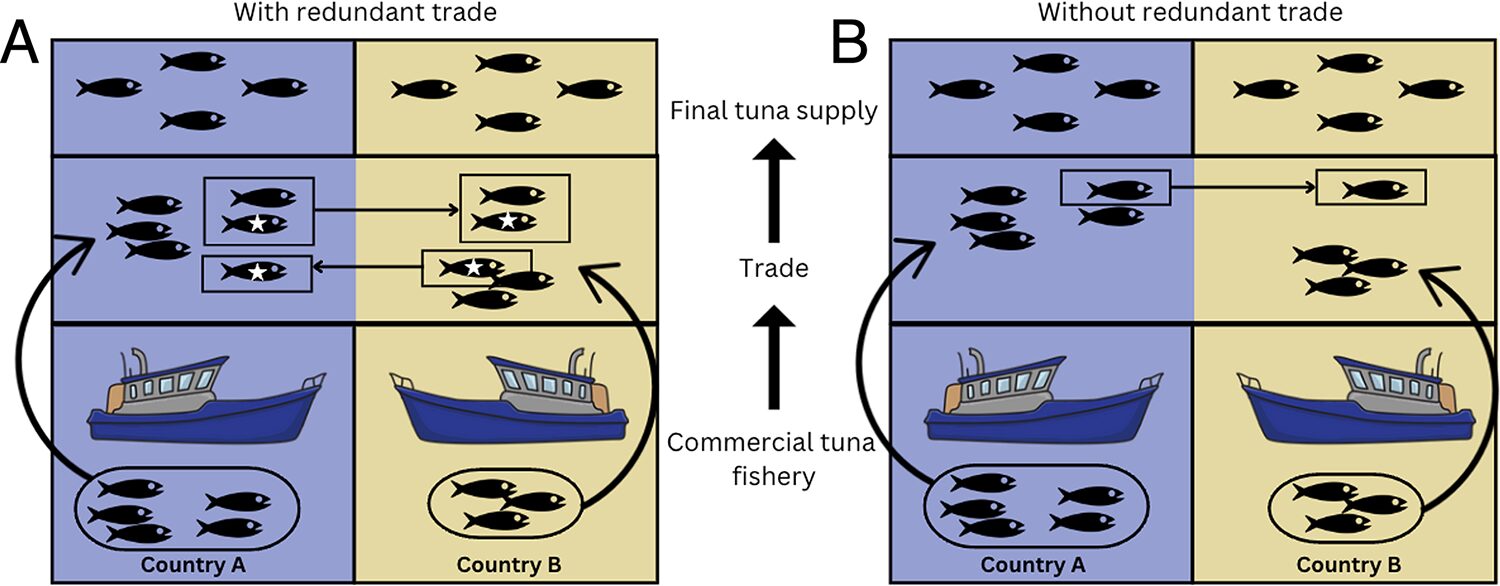
Study setup
We used a global seafood trade database that estimates the annual volume of seafood imported by each country and its origin (i.e., exporting country). This dataset was selected because it identifies if the export product was produced through aquaculture or wild capture fisheries and categorizes if each record was a re-export (i.e., exported more than once). It also has the longest time series of trade data currently available.
Aquaculture records were excluded to reduce uncertainty around the comparability of species/products), and also excluded re-exported trade by only considering the initial exporting country and final importing country. This step eliminates double counting of trade and reduces consideration of processed goods that may occur due to re-exportation. Also excluded were data not identifiable to the species level.
While this seafood trade dataset is the best currently available for the study’s purposes, we recognize that the data is aggregated across time (year), location (country) and product form (taxonomic species), which masks heterogeneity and increases uncertainty in redundant trade estimates. Additionally, much of the data was not disaggregated to the species level and had to be excluded, which may underestimate our results.
For detailed information on the data and analyses used, refer to the original publication.
Results and discussion
Our results show that the majority of countries participated in redundant two-way trade across the global seafood trade network in the study period. There are numerous social (e.g., taste preferences), economic (e.g., profit maximization), political (e.g., trade agreements), and ecological (e.g., resource availability, habitat condition) factors that determine why seafood is traded between two countries].
Two-way trade (i.e., exchange of functionally similar goods or commodities between two countries) of seafood is no exception. We acknowledge that our results are dependent upon the quality of trade data, which is impacted by the well-known fact that the traceability of global seafood supply chains is poor. Achieving a nature-positive future requires evaluation across entire value chains, and we identify redundant trade as one potential leverage point to avoid impacts without compromising the seafood supply.
Although redundant trade only accounts for a small fraction of global seafood trade (2.6 to 4.6 percent, depending on the year), and potential motivations for participating in redundant trade are complex, there are several potential benefits for reducing its occurrence. Eliminating redundant trade could shorten supply chains by keeping goods within the producing country. This would reduce impact displacement without compromising supply. For example, shortening supply chains could reduce the environmental impacts of trade, such as the spread of pests and greenhouse gas emissions (particularly for countries trading across large geographic distances).
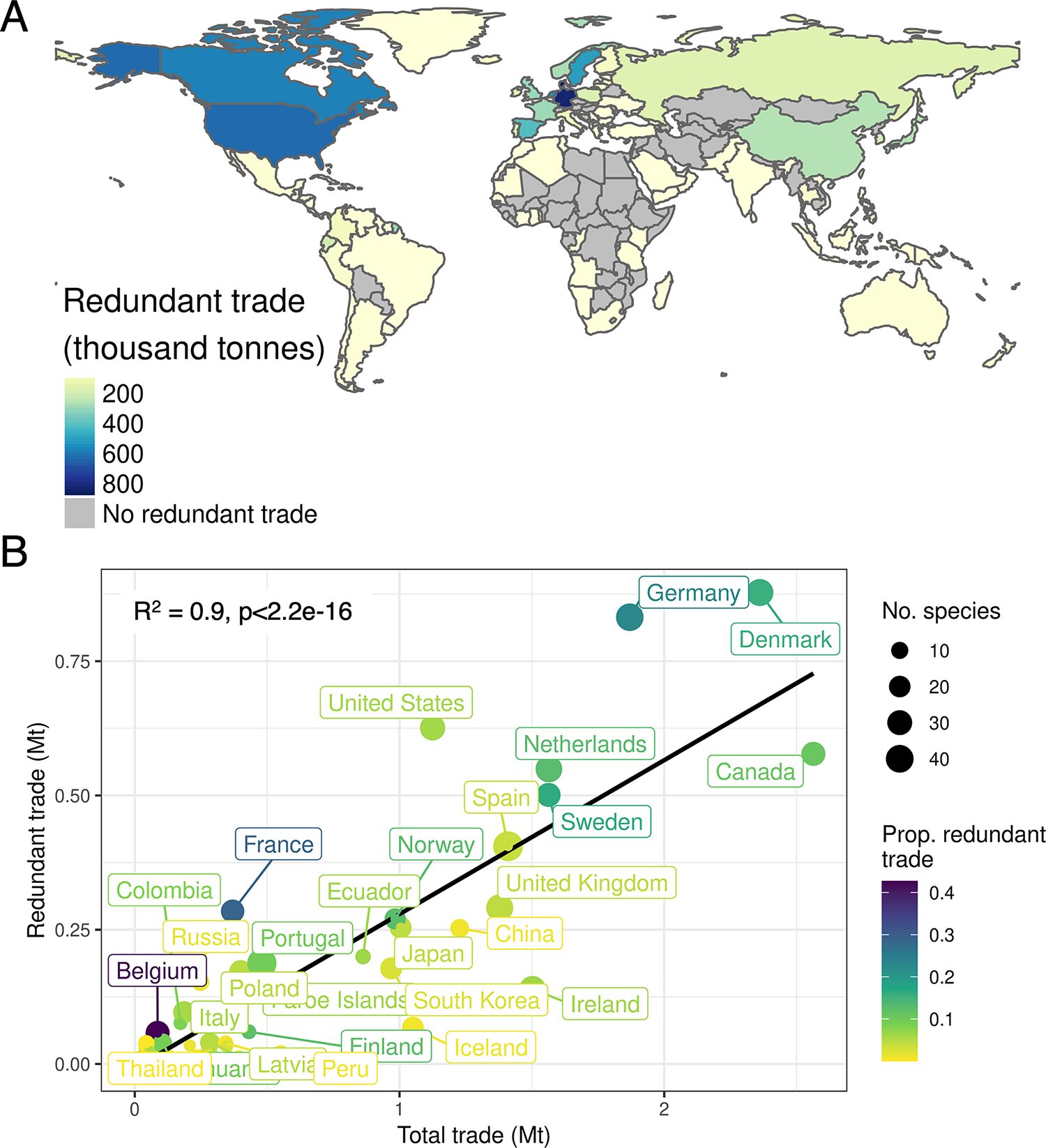
For intercontinental trade partners, like Ecuador and Spain or China and Russia, retaining their own wild-caught fisheries production could reduce carbon emissions from freight, which currently accounts for 7 percent of global emissions and is expected to increase 4-fold by 2050. In the same vein, reducing redundant trade could improve impact accounting by limiting the displacement of environmental and socioeconomic impacts through trade and improving traceability, a pervasive problem in seafood production that is complicated by complex trade networks that would be streamlined if redundant trade was eliminated. Eliminating redundant two-way trade could decrease trade dependence for certain countries, reducing potential impacts of world trade disruptions, such as during the COVID-19 pandemic.
On the other hand, trade can also benefit the environment by increasing use efficiency and reducing waste. There is contradictory evidence that two-way traded agricultural commodities may in fact have positive environmental effects, highlighting the need to investigate these patterns specifically for the seafood sector. For example, a study found that carbon footprints of imported and domestic seafood were similar in Australia since the capture or on-farm stage is usually the greatest source of carbon emissions.
We found that nearly 70 percent of redundant trade occurs between just 10 countries (Denmark, Germany, the United States, Canada, the Netherlands, Sweden, Spain, the United Kingdom, France and Norway). The top trade partners participating in redundant two-way trade are close neighbors (Canada-United States, Germany-Netherlands, Denmark-Sweden, Germany-Denmark, France-Norway), most of which are part of the European Union.
Other studies have found large increases in seafood trade within regions, largely driven by regional free trade agreements. Common Fisheries Policy and trade agreements across the European Union and the United States-Mexico-Canada Agreement in North America likely support beneficial trade across these areas, along with strong political and economic bonds, which together may incentivize redundant two-way trade. However, as transportation and communication costs decrease there may be an increase in redundant trade between more distant trade partners.
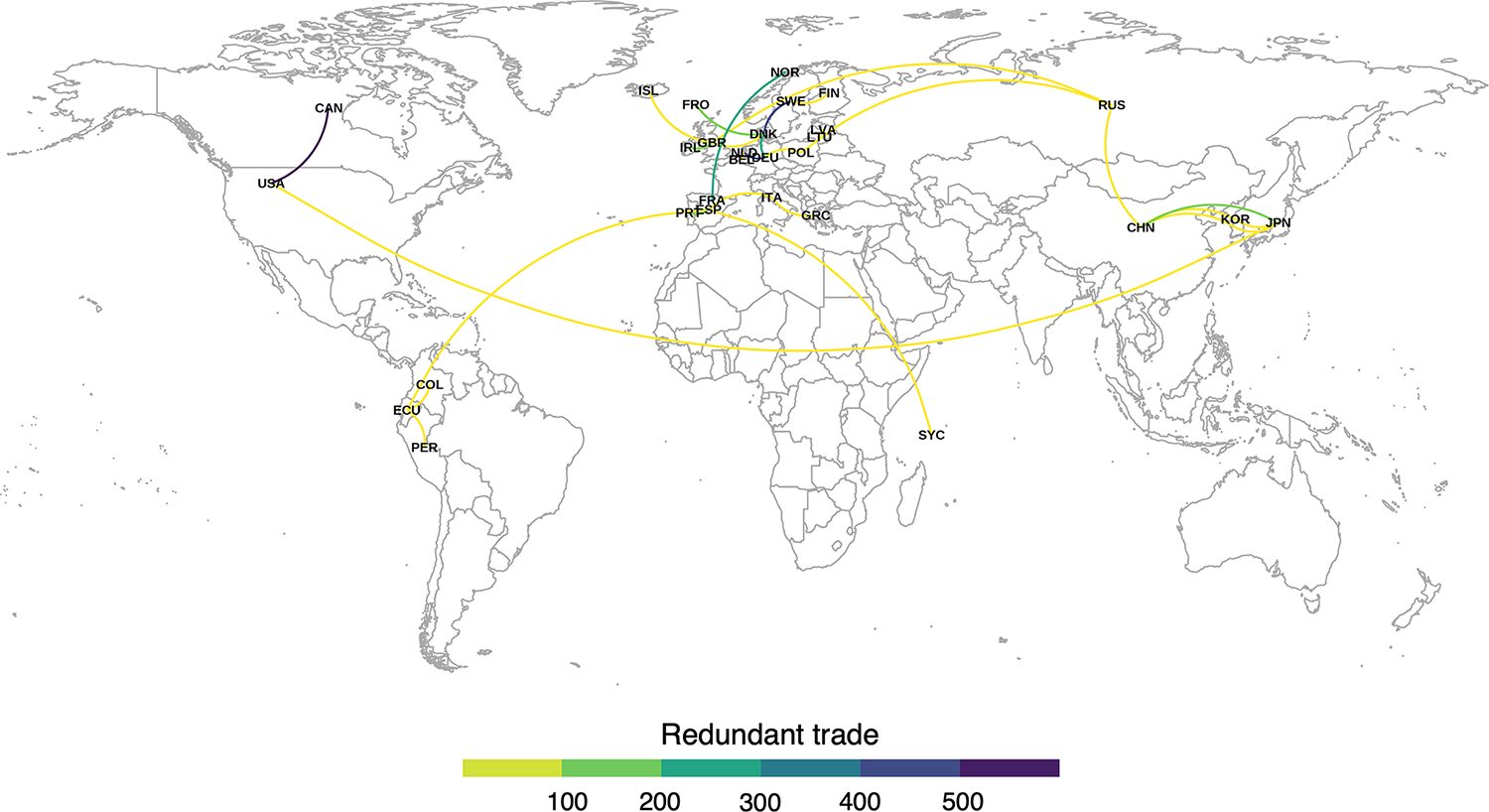
Interestingly, many of the same countries participating in redundant trade have been identified as top countries involved in other unsustainable aspects of the seafood supply chain, including importing and fishing for endangered species, importing from and fishing in places that have poorly managed fisheries, and subsidizing fisheries. This suggests that a stronger focus on environmental sustainability within EU and North American seafood trade policies could set a precedence for global sustainable trade and development.
Our results provide a first estimate of how much redundant seafood trade occurs, but not why or when redundant trade is occurring. In addition, some redundant trade may occur due to the exchange of the same species as different products (e.g., fresh and canned tuna), which could not be accounted for in our analysis. Some redundant trade may be explained by seasonality and temporal fishing management restrictions, such as limiting the catch of a species in different countries at different times. In such cases, countries would rely on imports to meet seafood demands during some months but would be relied upon during other months to achieve other countries’ seafood demands. Fine-scale data regarding processing stages, trade networks across countries and regions, and seasonal variation would shed light on potential efficiencies of such trade and should be considered in future work when available.
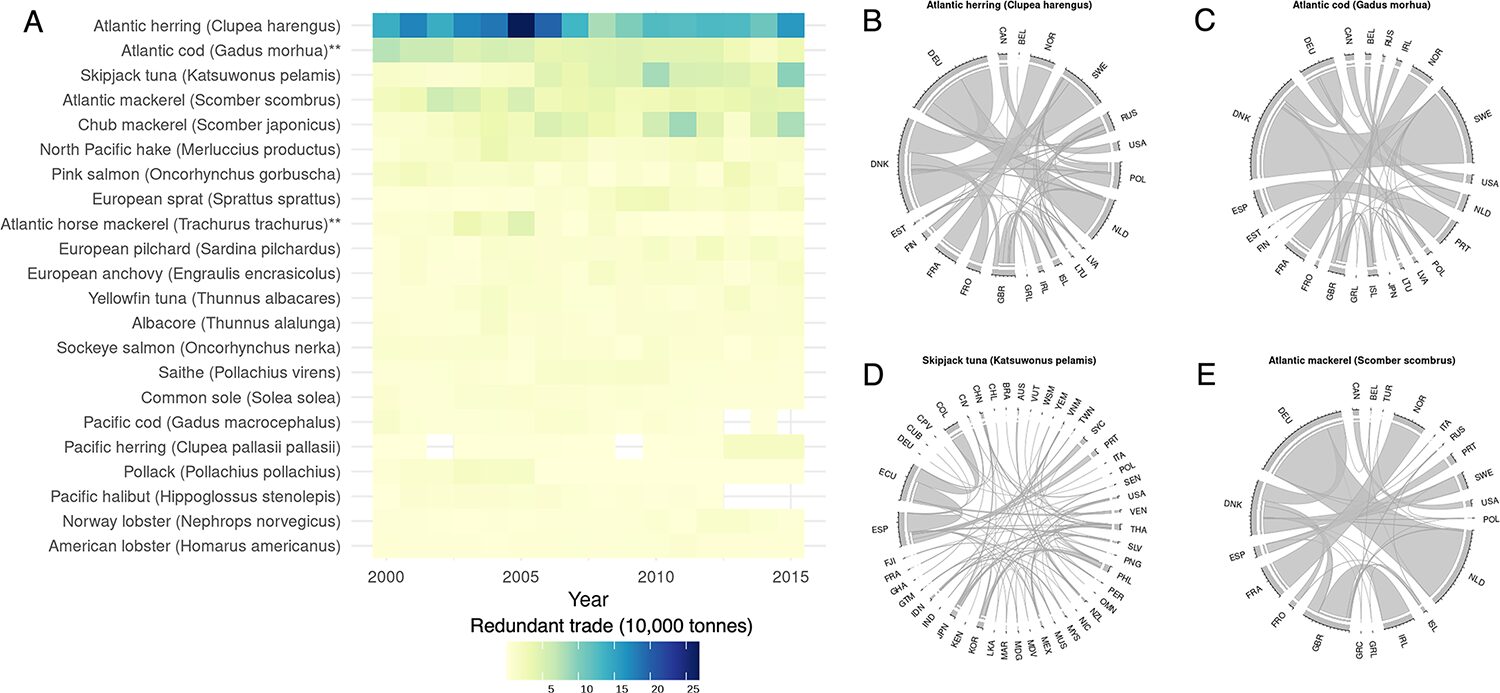
There are several important aspects of the data and our analysis that need to be considered when interpreting our results. Aggregation across time, space, and product within the seafood trade dataset likely overestimates our results in some instances and underestimates in others. Quantifying redundant trade at a finer resolution across these scales and further exploring its drivers should be a priority when data becomes available. Further, our analysis is not representative of all fish and fish products as we focused on wild-caught fisheries and did not assess aquaculture trade.
Aquaculture is currently responsible for more than half the world’s seafood production, which may provide a different picture than our findings. However, including aquaculture would create complexities for the comparability of products and discerning country motivation for participating in redundant trade. Additional datasets should be explored in future analyses. However, there are many complexities and difficulties in comparability due to differences in time scales, commodities (i.e., live weight vs product weight vs. value), and lack of distinction between production methods (i.e., wild-caught and aquaculture).
Some fish species are shrinking. Is global warming to blame?
Perspectives
When exploring the role of redundant trade in seafood sustainability, thought should be given to the role of consumer preference on the demand for certain types of seafood. While this study has assumed species in the trade dataset represent homogenous goods, this may not always be the case, with consumer preference differentiating parts of the fish, preservation methods or cooking methods thus driving redundant seafood trade. For example, Australia, like many other countries, exports high-value seafood products (e.g., premium tuna species, like bluefin, to Japan) and imports lower-value products (e.g., canned skipjack tuna from Thailand).
However, we have accounted for as much of this variation as possible within our dataset by 1) only investigating trade of the same taxonomic species between two counties; 2) omitting re-exported seafood to reduce records of processed (e.g., canned) seafood; 3) only considering wild-caught, not aquaculture produced seafood. Further work is needed to build on our results to better understand the drivers and costs (social, environmental and economic) of redundant trade and the potential benefits of its reduction.
Globalization and technological advancements have allowed seafood trade to steadily increase since the 1970s. There are many economic and social benefits of global trade, but also many inefficiencies that can result in poor environmental and social outcomes. We found that redundant trade occurs globally and has been increasing in recent years, despite still making up a relatively small proportion of total seafood trade. Redundant trade could represent an overlooked leverage point to streamline sustainable trade and thus reduce socioeconomic and environmental impacts of seafood globally and should be explored in future studies. Understanding and incorporating such imperative information will be pivotal for meeting global sustainable development objectives.
Now that you've reached the end of the article ...
… please consider supporting GSA’s mission to advance responsible seafood practices through education, advocacy and third-party assurances. The Advocate aims to document the evolution of responsible seafood practices and share the expansive knowledge of our vast network of contributors.
By becoming a Global Seafood Alliance member, you’re ensuring that all of the pre-competitive work we do through member benefits, resources and events can continue. Individual membership costs just $50 a year.
Not a GSA member? Join us.
Author
-
Caitlin D. Kuempel
Corresponding author
Coastal and Marine Research Centre, Australian Rivers Institute, School of Environment and Science, Griffith University, Nathan, Australia
Related Posts
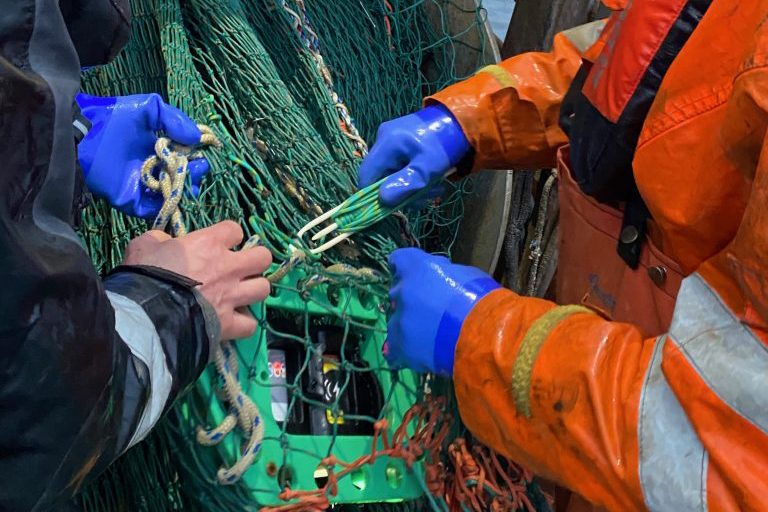
Fisheries
‘A world down below’ – Deeper fishing insights lead to better tools for bycatch reduction
High-tech bycatch reduction devices – data analytics, cameras and sensors – are in play but SafetyNet Technologies says the secret is collaboration.
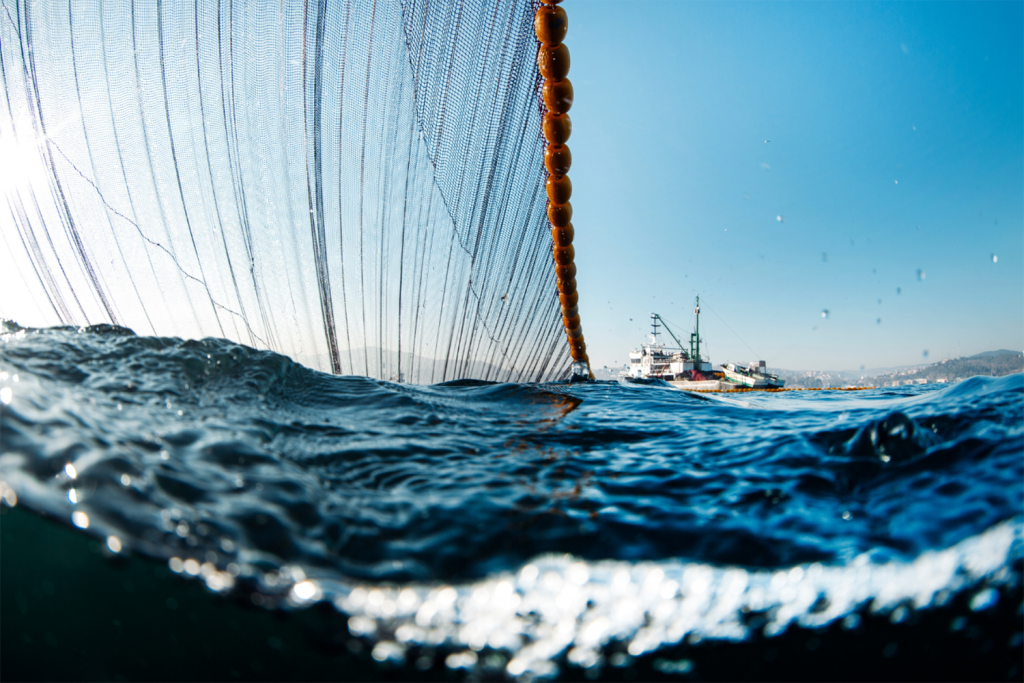
Fisheries
‘They need a good reason to stay’: How one coalition may break a decade of deadlock in the North Atlantic mackerel fishery
GOAL 2022: The North Atlantic Pelagic Advocacy Group, led by Dr. Tom Pickerell, is a finalist for GSA’s inaugural Global Fisheries Innovation Award.
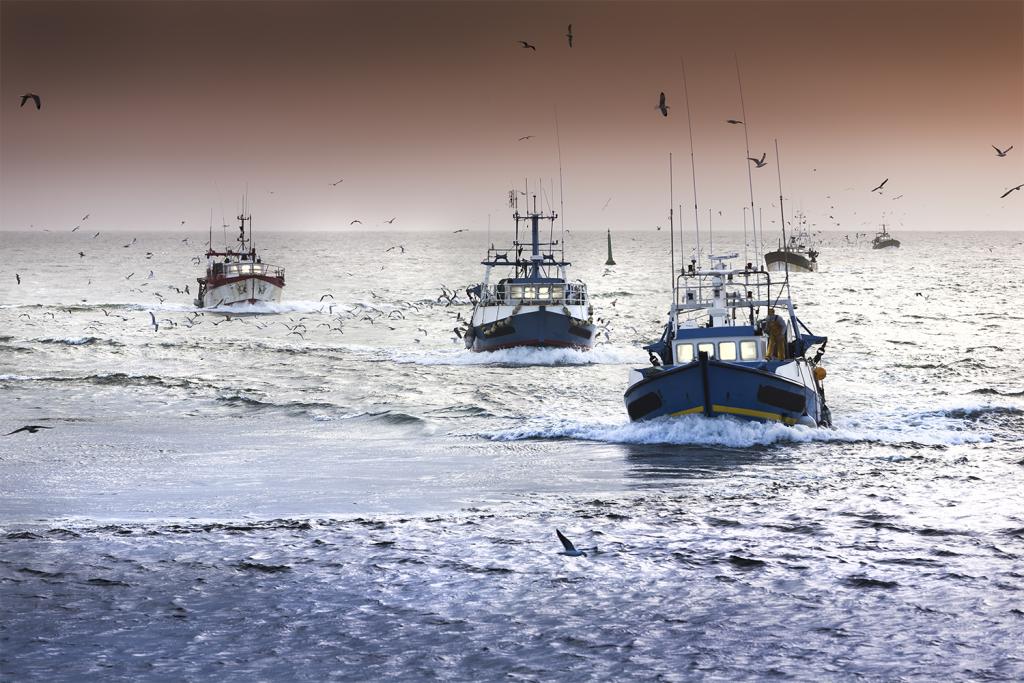
Innovation & Investment
‘We want change’: How a seafood database aims to influence seafood investment decisions
Planet Tracker’s seafood database evaluates seafood companies’ exposure to sustainability risks like overfishing and IUU fishing.
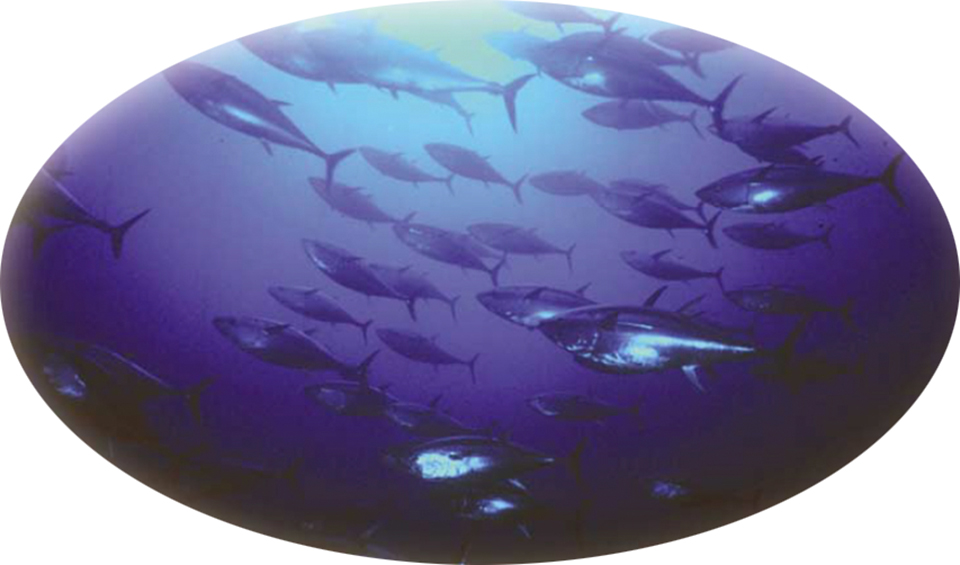
Health & Welfare
Scombrotoxins, part 1
Without proper control of seafood handling and processing, high amino acid content and bacterial activity can rapidly elevate concentrations of biogenic amines like scombrotoxins.



